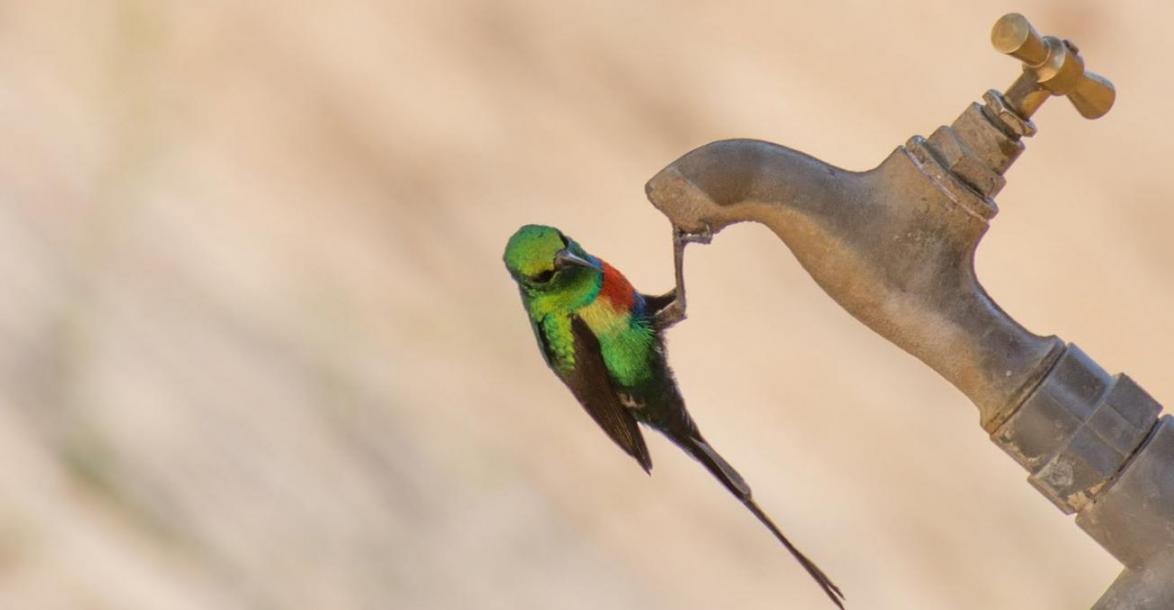The water crisis has never before threatened Iranian people so cruelly. The average amount of water each citizen can enjoy per year has plummeted to under 1400 cubic meters. This is lower than the international estimate of 1700 cubic meters for each individual.
While the depression of groundwater is a global challenge, Iran has suffered many irreversible losses. To mention a few, Lake Urumia has diminished; Zayandeh Rud River has dried up; and Zagros Oak Forest is dwindling and drying out even as we breathe.
Turaj Fathi, deputy of Water and Soil Office at the Department of Environment, says 70 percent of the groundwater tables of the country have been decreasing during the last 15 years. The tragedy of Urumia Lake is only a symptom of a widespread phenomenon half hidden under the drying ground.
The precipitation rate of the country is 411 billion cubic meters. With the evaporation rate shifting between 2 and 4 meters per year, 297 billion cubic meters of water is lost each year, Fathi added and regretted that there is no more sweet groundwater in some southern provinces such as Fars, Hormozgan and Kerman; after all, the potable water has been pumped out. The only choice left for the local authorities was to refine the saline and brackish waters still available, according to the DoE website.
President Hassan Rouhani has declared that water is now a national security issue. To the most deprived people he has promised to bring back the water, by means of "diplomatic negotiations" and irrigation networks.
As a way out of the crisis, Khosrow Erteqaee, managing director of Tehran Regional Water Company emphasizes the conservation of the waters that "give no income", including prevention of unauthorized branching, network leakage, overflow of reservoirs, cleaning of reservoirs, water theft, misreading of the meters, etc.
Drying Dams
Last year the dams of the country contained 900 million cubic meters of water, while there is only 500 million cubic meters now. Mamlu, a new dam 45 km southeast of Tehran is soon to be joined in the water network of this massive city. The dam feeds on Jajrud River and covers more than 60,000 sq. km; it serves as one of the major water sources of Tehran.
Mohammad Dervish, a zealous member of the Research Institute of Forests and Rangelands, reminds us that drought has always been an inseparable element of Iranian history - an Achaemenid king once had to implore the gods to ward off the drought!
However, the crisis cannot be attributed solely to the drought, Dervish adds. He refers to hectares of vineyards turned to thirsty apple gardens with water consumption five times greater; the agricultural lands of Southern Khorasan extending threefold with saffron and jujube, in order to pour in more profit." How can we put all the blame on the drought?" he wonders. For the drying up of Lake Urumia, he estimates that the drought has constituted 8 to 10 % of the cause at the most.
Mohammad Parvaresh, director general of Tehran Water and Waste Water Organization has announced that the organization is already implementing water pressure breakers between midnight and 4 a.m. The water pressure has been reduced causing people's discontent. Parvaresh believes that the cost of water is still too low for the people to mind their consumption patterns.
Erteqaee of the water company provides us with a graphic description of water consumption in Tehran: the city swallows down 36.3 cubic meters per second, an amount 4 times greater than the discharge of Karaj River that feeds Amir Kabir Dam.
The water network of Tehran, Erteqaee says, is too old to ration water. It is the policy of the ministry of energy not to ration or shut off water supply in any city, but with regard to the rise of consumption levels by 2.3 % and the decrease in water sources, he doesn't guarantee that there won't be water rationing.


